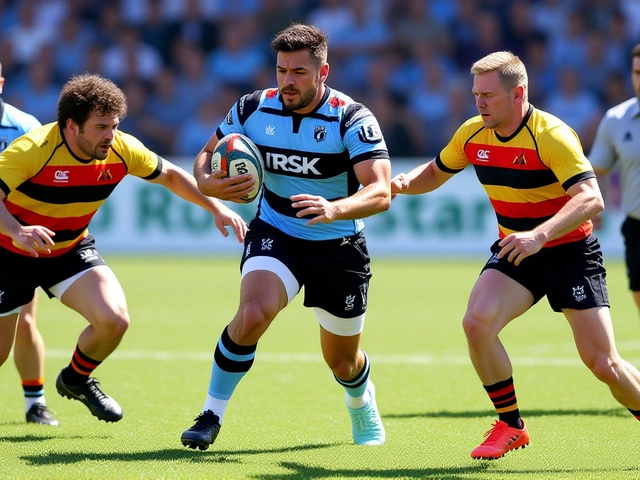 20
Feb,2023
20
Feb,2023
Tennis elbow, also known as lateral epicondylitis, is an injury that affects the tendons in your elbow. It is a common condition among athletes and can be very painful and disabling. The condition is caused by overuse of the muscles and tendons in the forearm and elbow, leading to inflammation and pain. In some cases, the condition may require medical treatment. If you think you may have tennis elbow, it is important to understand the symptoms and causes of the condition.
The most common symptom of tennis elbow is pain or tenderness on the outside part of your elbow. This pain can range from a dull ache to a sharp, burning sensation. You may also experience pain or stiffness when extending or flexing your arm. Other common symptoms include weakness in the forearm muscles, a decrease in grip strength, and a decrease in range of motion in the elbow joint.
The cause of tennis elbow is typically overuse of the forearm muscles and tendons. Activities that involve repeated motions or extended periods of gripping can cause stress to the tendons in your elbow. This can lead to inflammation and irritation of the tendons, resulting in pain and discomfort. Common activities that can lead to tennis elbow include sports such as tennis, squash, and racquetball, as well as work-related activities such as typing, painting, and carpentry.
If you think you may have tennis elbow, it is important to see your doctor for a proper diagnosis. Your doctor will be able to evaluate your symptoms and recommend a course of treatment. Treatment may include rest, physical therapy, anti-inflammatory medications, and in some cases, surgery. If you are experiencing the symptoms of tennis elbow, it is important to take steps to prevent the condition from getting worse.
Tennis elbow is a painful condition that can plague athletes of all levels. It is caused by overuse of the elbow joint and tendons, leading to inflammation and pain. While it can be prevented with proper stretching and warm-up exercises, it is important to diagnose and treat it early in order to avoid more serious injury and long-term damage. Here are some of the benefits of treating tennis elbow early.
Reduced Pain and Inflammation
The most immediate benefit of treating tennis elbow early is reducing the pain and inflammation in the elbow area. By taking medications and using physical therapy, you can reduce the inflammation and pain in the elbow joint and surrounding tissues. This will help to reduce the likelihood of long-term damage as well as helping you to get back to playing tennis or other activities sooner.
Improved Range of Motion
Treating tennis elbow early can also help to improve the range of motion in the elbow joint. By using physical therapy and stretching exercises, you can increase the flexibility in the elbow joint, which will help to reduce the risk of further injury. This can also help to improve your overall performance on the court.
Prevention of Long-term Damage
When tennis elbow is treated early, it can help to prevent long-term damage to the elbow joint. By reducing the inflammation and pain, you can help to prevent the formation of scar tissue, which can lead to further joint damage and stiffness. When treated early, you can help to avoid the need for more invasive treatments such as surgery.
Treating tennis elbow early is important to help reduce the pain and inflammation, improve the range of motion, and prevent long-term damage. By taking the necessary steps to diagnose and treat it early, you can help to prevent more serious injury and get back to playing your favorite sport sooner.
Tennis elbow is a painful condition caused by overuse of the muscles and tendons in the elbow. It is most common among people who participate in racquet sports, such as tennis, but can also affect other athletes, such as golfers and baseball players. The pain is usually located on the outside of the elbow, but can also affect the inner elbow and forearm. Treatment for tennis elbow typically involves rest, ice, and over-the-counter pain medications; however, more severe cases may require physical therapy or surgery.
Physical therapy is often recommended for those suffering from tennis elbow. It can involve stretching, strengthening, and massage to help reduce inflammation and improve range of motion. Stretching can help to decrease the tension in the muscles and tendons, while strengthening can help to improve the overall strength of the elbow and forearm muscles. Massage can improve blood circulation, reduce pain, and improve flexibility.
In some cases, surgery may be necessary to treat tennis elbow. This type of surgery is known as an open release and is used to reduce tension in the muscles and tendons. The surgery is usually done as an outpatient procedure with the patient receiving a local anesthetic. The recovery period is typically a few weeks, depending on the severity of the condition.
If you are suffering from tennis elbow, it is important to consult with your physician or physical therapist to determine the appropriate treatment for your condition. With the proper treatment, you can experience relief from your pain and get back to enjoying your favorite activities.
How to Prevent Tennis Elbow from Returning
Tennis elbow is a painful condition that affects the elbow, arm and shoulder area. It is caused by repetitive motion of the elbow and can be very painful. Fortunately, there are steps you can take to prevent tennis elbow from returning.Rest and Ice
The most important step in preventing tennis elbow from returning is to rest your arm. Make sure to give your arm a break from any activities that may cause pain or discomfort. Applying ice to the area can also help reduce swelling and pain.Strengthen Your Muscles
Strengthening the muscles around your elbow is also important for preventing tennis elbow from returning. Exercises that focus on strengthening your forearm muscles, such as wrist curls and reverse wrist curls, can help. You can also try doing exercises that work your shoulder muscles, such as shoulder presses and lateral raises.Wear a Brace
Using a brace or strap to support your elbow can also help prevent tennis elbow from returning. A brace or strap provides extra support and stability to the elbow, reducing the stress on the muscles and tendons.Stretch Regularly
Stretching is also important for preventing tennis elbow from returning. Stretching your arm, shoulder and elbow muscles can help reduce tension and improve flexibility. Be sure to stretch before and after any physical activity to help prevent injuries. By following these steps, you can help prevent tennis elbow from returning and keep your arm pain-free.Tennis elbow, also known as lateral epicondylitis, is a painful condition caused by overuse of the muscles in the forearm. It can be a debilitating condition, making everyday activities difficult. Fortunately, there are some stretches that can help relieve tennis elbow pain.
Bicep Stretch
This stretch targets the bicep muscle and helps relieve tension in the forearm. To do this stretch, start by standing with your feet shoulder-width apart. Bend your arm at the elbow and grab your bicep with your opposite hand. Gently pull your arm across your body until you feel a gentle stretch in your bicep. Hold the stretch for 30 seconds and then switch arms. Repeat this stretch three times on each arm.
Wrist Flexor Stretch
This stretch targets the wrist flexor muscles, which are often overused in tennis players. To do this stretch, start by standing with your feet shoulder-width apart. Extend your arm out in front of you with your palm facing up. With your other hand, grab your fingers and gently pull them back until you feel a gentle stretch in your forearm. Hold the stretch for 30 seconds and then switch arms. Repeat this stretch three times on each arm.
Finger Extension Stretch
This stretch helps to stretch and strengthen the small muscles in the fingers. To do this stretch, start by standing with your feet shoulder-width apart and holding your arm out in front of you. Spread your fingers apart as far as you can and then use your opposite hand to gently pull your fingers back until you feel a gentle stretch. Hold the stretch for 30 seconds and then switch arms. Repeat this stretch three times on each arm.
Regularly doing these stretches can help relieve tennis elbow pain and improve your overall mobility. However, if you’re still experiencing pain after trying these stretches, it’s important to speak to a medical professional.




